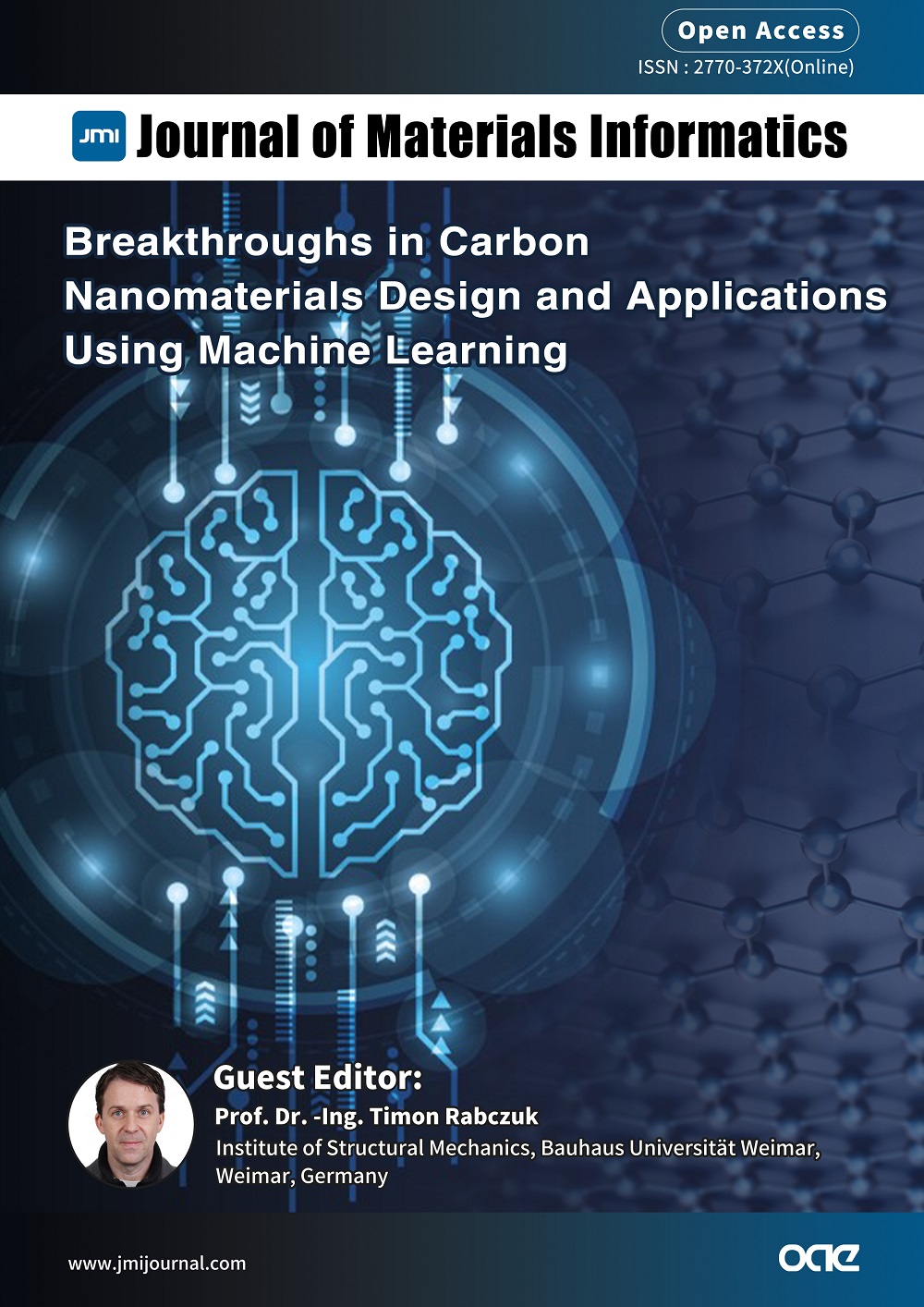
Topic: Breakthroughs in Carbon Nanomaterials Design and Applications Using Machine Learning
A Special Issue of Journal of Materials Informatics
ISSN 2770-372X (Online)
Submission deadline: 31 Aug 2024
Guest Editor(s)
Special Issue Introduction
Carbon nanomaterials have numerous applications in Engineering due to their excellent (mechanical and thermal) properties. The commercial applications of such materials have been growing tremendously in the past decade, ranging from food packaging, films, fuel tanks, environmental protection, and flammability reduction to new electromechanical devices, to name a few. Macroscopic properties are the main criteria for choosing materials for a particular engineering application. However, the origins of macroscopic material properties reside in the properties and interactions taking place on finer length scales. Therefore, it is essential to understand and quantify the links between phenomena on the fine scales and their macroscopic effects for the design of new carbon-based nanomaterials. As experimental testing is expensive, time-consuming, and sometimes unfeasible, computational methods are often exploited.
Computational methods for carbon nanomaterials aim to model these materials at different length scales. Machine Learning (ML) has seen a significant increase in its application to various scientific fields. In most cases, "data-driven" approaches have been pursued, which require systematic collection of large data sets. However, more recently, there have been successes in developing novel algorithms that "learn" from pre-determined rules in a more human-like fashion. Physics-informed neural networks and neural operators, which can be alternatives or complements to classical numerical methods such as finite elements, are typical examples. On the smaller length scales, approaches such as ML interatomic potentials have been recently developed. These are very promising in the fast and efficient designing of novel nanomaterials due to their high efficiency and accuracy. They have already been used in the context of multiscale analysis, bridging ab initio models up to continuum mechanics or ‘from basic physics to the prediction of macroscopic material properties'.
This Special Issue aims to report on the most recent advances of such ML-based approaches to design novel carbon-based nanomaterials. It also addresses multiscale modeling of PMCs, predicting mechanical or thermal material properties at various length scales, stochastic analysis, computational characterization and materials design. Potential topics include, but are not limited to:
● Multiscale modeling;
● Prediction of mechanical, fracture, thermal, and electrical properties of carbon nanomaterials across various length scales;
● Stochastic analysis;
● Computational characterization and materials design taking advantage of ML techniques;
● Data-driven approaches;
● Digital twins;
● Computational multi-field modeling;
● Uncertainty analysis;
● Physics-informed ML models, such as physics-informed neural networks, neural operators, etc.;
● ML-based optimization;
● Software development;
● ML interatomic potentials;
● Deep molecular dynamics;
● Finite element analysis;
● Density functional theory (DFT).
Computational methods for carbon nanomaterials aim to model these materials at different length scales. Machine Learning (ML) has seen a significant increase in its application to various scientific fields. In most cases, "data-driven" approaches have been pursued, which require systematic collection of large data sets. However, more recently, there have been successes in developing novel algorithms that "learn" from pre-determined rules in a more human-like fashion. Physics-informed neural networks and neural operators, which can be alternatives or complements to classical numerical methods such as finite elements, are typical examples. On the smaller length scales, approaches such as ML interatomic potentials have been recently developed. These are very promising in the fast and efficient designing of novel nanomaterials due to their high efficiency and accuracy. They have already been used in the context of multiscale analysis, bridging ab initio models up to continuum mechanics or ‘from basic physics to the prediction of macroscopic material properties'.
This Special Issue aims to report on the most recent advances of such ML-based approaches to design novel carbon-based nanomaterials. It also addresses multiscale modeling of PMCs, predicting mechanical or thermal material properties at various length scales, stochastic analysis, computational characterization and materials design. Potential topics include, but are not limited to:
● Multiscale modeling;
● Prediction of mechanical, fracture, thermal, and electrical properties of carbon nanomaterials across various length scales;
● Stochastic analysis;
● Computational characterization and materials design taking advantage of ML techniques;
● Data-driven approaches;
● Digital twins;
● Computational multi-field modeling;
● Uncertainty analysis;
● Physics-informed ML models, such as physics-informed neural networks, neural operators, etc.;
● ML-based optimization;
● Software development;
● ML interatomic potentials;
● Deep molecular dynamics;
● Finite element analysis;
● Density functional theory (DFT).
Submission Deadline
31 Aug 2024
Submission Information
For Author Instructions, please refer to https://www.oaepublish.com/jmi/author_instructions
For Online Submission, please login at https://oaemesas.com/login?JournalId=jmi&SpecialIssueId=JMI230926
Submission Deadline: 31 Aug 2024
Contacts: Mengyu Yang, Assistant Editor, JMI@oaepublish.com





